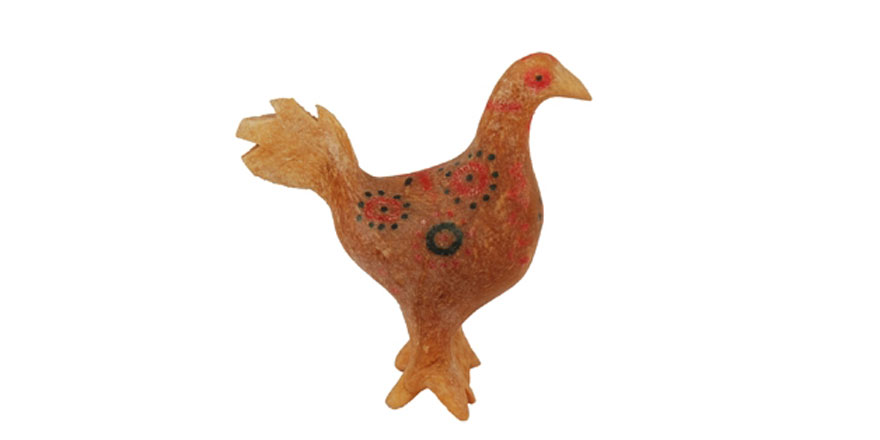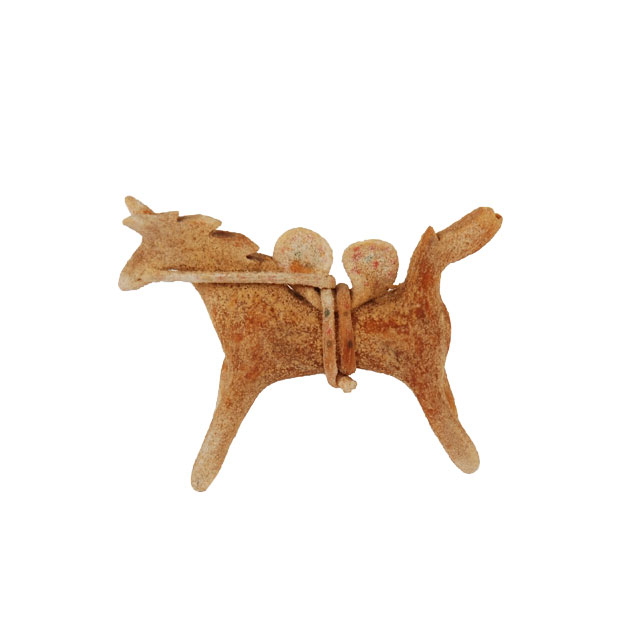Conservator Bronwen has been working with the food in our stores for the Collections People Stories project, and stopped by to answer some of the pressing questions we’ve been getting about these unusual objects.
Why does it survive?
The food used in objects in our collections is different to the food you eat. It’s mostly dried out when it’s made. This prevents micro-organisms from eating it, and causing it to rot. This means that objects, such as the cheese horse, survive much longer than you would expect.
Could you still eat it?
Possibly, but you wouldn’t want to. Although they’re made of food, they were not supposed to be eaten and were mostly for decoration. Objects like the bread chicken are so dry they would be difficult to eat. They would also taste horrible, although they may not make you ill.
Why doesn’t it go mouldy?
We control the temperature and humidity (the amount of water in the air) in our collection stores and exhibition galleries. We can prevent mould growth by stopping the environment from being too damp. Because most of our food objects are dried out, they’re less likely to go mouldy than the food we eat. We keep food objects that were meant to be eaten, such as chocolate skulls, in a fridge with silica gel (which removes water from the air) to prevent mould growth.
How come we have food in collections when you are not allowed to eat in the museum?
This is because eating in the museum encourages insects that eat our collections, whereas, objects made of food don’t. There are several reasons for this:
- Insects can survive once they get into the museum if there are crumbs or drink spills around for them to eat.
- Insects are not able to get to the food in our collections because of the way we control what comes into areas where museum objects are.
- The food we eat is very tasty to insects but usually, the food in our collections isn’t.
How do we preserve food in our collections?
We use preventive conservation to ensure our objects last as long as possible. We monitor and control the environment (light, temperature and humidity) and only use stable materials in storage and displays. We also carry out research and testing on materials. In 2010 we acquired votive offerings made of rice paste from Bali; sacrificial pieces were also acquired and tested to find the best way to conserve them.
How long will they last?
It’s difficult to predict how long objects will last. Ideally, we want our objects to survive indefinitely, for future generations to enjoy and learn from. To do this, we’re always trying to learn more about our objects, and we use this knowledge to decide how best to conserve them.





